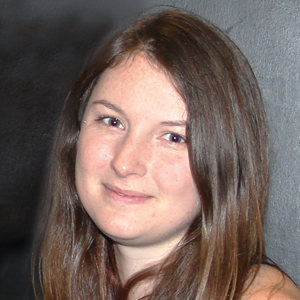University students suffer not only from a negative stereotype, but one that is a good 30 years out of date.
A quick look at the history of Australian universities will show that in the first 100 years of their slow evolution, they were rarely defined by their student population. And it is little wonder; on the eve of World War II just over 14,000 students, or just 0.2 per cent of the population, attended one of only six Australian universities.
But after the war things began to change and by the time the Whitlam Labor Government introduced fee-free education in 1974, Australian university students had become more vibrant, more vocal and more diverse.
The possibility of nuclear holocaust still loomed large, the Vietnam War ground on, feminism had arrived and the Aboriginal Rights Movement was in full swing.
There were bastions to challenge, student activism was on the six o’clock news and an accompanying ‘dissident university student’ stereotype had emerged.
It is hard to think of these years as ‘gentler times’ but in some ways – nestled in before the explosion of internet communications technologies, before globalisation, the 24-hour news cycle and the Twittersphere – they were.
Today’s students pay their way, with the cost of a basic three-year degree sitting at about $18,500 and a more typical four-year qualification topping $35,000. They juggle these economic and life challenges in ways their graduate parents and grandparents could not have imagined.
Today more students, and a more diverse array of students, attend Australian universities than at any other time in our history.
Total student numbers in Australia are more than 1.3 million. In 2015 the average student is more likely to be about 22 to 23 years old when they start their degree, but many are older. More of them are female than male, a good percentage are working and studying, and much of their interaction with their university will be online.
 For University of South Australia Pro Vice Chancellor: Student Engagement and Equity, Dr Laura-Anne Bull, the idea of a typical university student is illusory.
For University of South Australia Pro Vice Chancellor: Student Engagement and Equity, Dr Laura-Anne Bull, the idea of a typical university student is illusory.
“All university students are different and they are becoming more different, as are their expectations of their education experience at university,” Dr Bull says.
“In the broadest sense they all want high-quality education programs delivered and facilitated by outstanding staff. They want to feel well-prepared for both careers and the possibility of further learning.
“School leavers want to be immersed in student life, but adults returning to study value flexibility and the option to pick and choose what is relevant to them.
“All of them want a job or a better job after graduation.”
Dr Bull says it is this kaleidoscope of student expectations that is one of the biggest challenges for modern universities.
“Today’s students have a much greater sense of education as a transaction – and they want real value for their investment,” she says.
“The fact is the job market is more competitive than ever. These days a basic Bachelor’s degree in arts or science is the least that is expected in many careers. Employers want someone with the best possible degree in the field; often a Master’s or other postgraduate qualification and they want someone who is work-ready too. The parchment is not enough on its own.”
Dr Bull says the great lesson for universities is to understand that delivering homogenous services, no matter how well, doesn’t cut the mustard.
“We must innovate so that students have a framework of choices they can personalise to get the university experience they want,” she says.
“It is about providing a spectrum of options for experiential learning and other activities from which they can pick and choose to suit their needs.”
 UniSA Bachelor of Public Relations student Lisa Ranson understands clearly that universities have a big job to do in meeting students’ needs.
UniSA Bachelor of Public Relations student Lisa Ranson understands clearly that universities have a big job to do in meeting students’ needs.
“In the current debate around university funding I can fully understand the benefits for universities in deregulation,” Lisa says.
“It would mean they could provide better facilities and hire better and more staff, but the idea that there would be people out there who would have to forego a tertiary education because they couldn’t afford it, just doesn’t sit well with me.
“My studies have been so important to me and I invest not only the time but also give complete mental availability to the study and the opportunities.”
But like many of her contemporaries, Lisa is juggling work and study. She holds down three jobs in the hospitality industry and clocks up 25-40 working hours a week on top of 9-12 contact hours at university, plus time devoted to assignments and extra learning activities.
“Anyone who suggests university students are just cruising through really can’t know many students – the stereotype is so far from my experience and that of most of my university friends,” she says.
Lisa has worked in some capacity all the way through high school and university because, she admits, she is ambitious.
She says the most valuable aspects of university apart from the core study, have been the opportunities offered to extend skills through exciting placements, extra-curricular leadership training and mentoring and special opportunities such as the UniSA-funded Summer Scholarships program, which she undertook this year.
With a keen understanding of public relations strategy, the 6.3 grade point average student is wise to the fact that the Summer Scholarship offers a tantalising taste of higher degree study.
“The project I worked on during the scholarship looked at discourse analysis around post-traumatic stress disorders in the military – how the language and conversation around PTSD has changed and is changing,” she says.
“I couldn’t help but think how good it would be to go on to do an honours degree project like that, so there is some clever marketing in that scholarship.”
As time-poor as she is, Lisa believes that, like her, many of her contemporaries value ‘efficient learning’.
“There needs to be clarity of purpose and expectation in the way teaching is delivered,” she says.
“Students don’t really have any time to be wasting on below-par teaching practices – most of us see our studies as the foundation of our future success and we want it to go well.”
The very structure of university education is being challenged worldwide as institutions increasingly understand that not only has the composition of the student body changed, so has the way they understand the world and the way they want to learn.
Traditional notions of large lectures and discursive tutorial groups are no longer valuable for time-poor, tech-savvy, globally mobile students.
And they don’t have much time for placards either. The revolutionary spirit of today’s university students is much more sharply focused on getting a quality education that will give them the career they need to change their world.